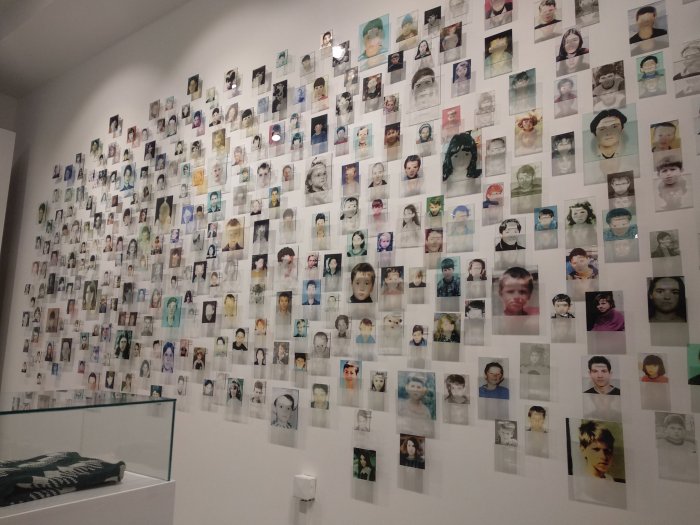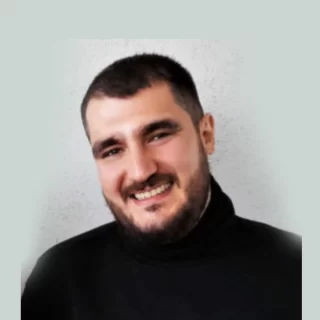Which events deserve to be commemorated? Who gets to have a statue and why?
By Blerta Hoçia
You can read part one here.

Just as in the official state narrative, even in the non-official one, stories of heroes and war prevail. However, unlike the institutional narrative, the non-official one contains other stories too, spontaneously borne out of need, perhaps to manifest the trauma, and also share the post-war’s war: that with oneself.
With regards to the war memory and dealing with the past, memorialization has been generally left up to self-financing and personal means, focusing, as mentioned, on heroes who fell during the war, and on KLA members. The Association of War Veterans, and friends and family too, spontaneously or upon consent of the respective municipalities, commission and erect statues and memorials for specific individuals, generally men, who were distinguished for their merit and heroism at war. This entire selection is arbitrary and does not necessarily express or represent the interests of the broader community.
These busts and statues were erected under such spirit of informality, same as some initiatives for house-museums and exhibitions commemorating the civilian victims or traumatic events. These initiatives are primarily a result of the dedication of family members who, with patience and sacrifice, have preserved every centimetre of the remaining physical space that is the only tangible trace of the tragedy. Thanks to such endurance and patience, the young generation and the broader public have nowadays the opportunity to deal with the past through preserved artefacts, as they used to be, as the victims left behind. Parallelly, such house-museums and memorials share stories and histories which, albeit being fragmented, can evoke a period that should not be forgotten.
Such is the House of Qerkezi Family (to mention only some initiatives that thankfully are permanent), a monument of cultural heritage preserved by the lady of the house herself, Ferdonija, who is one of the many family members of the missing persons from the war. Also, the House-Museum of Fadil Muqolli, who for more than 20 years managed to protect the space from time and elements of nature. Now, this house is under the protection of AMMKM. Another example is the Museum of Martyrs of Berisha Family, which only in 2021 was transformed into a small museum at the location where the massacre took place – the Pizzeria Kalabria. The museum was an initiative of family members, made possible through a private donation.
Following into the footsteps of family members of civilian victims, the Humanitarian Law Centre (HLC) decided, at their support, to organize an exhibition dedicated to the children murdered or missing because of the war.
Once Upon a Time and Never Again is the title of the exhibition that opened on 13 May 2019 and remains open to this day, aiming to become a permanent exhibition, hoping it will not be necessary to return the items and personal belongings of those children to their family members, and that along with them to silence the stories that those items so carefully embody in eternity. The exhibition is dedicated to a childhood interrupted, and that is why the title resembles the titles of fairy tales. Unfortunately, these stories are not fictitious like the fairy tales but living stories of war atrocities.
The exhibition is divided into three spaces. Each space serves the outlook on memory and memorialization. At the entrance, the wall of a long corridor extends. On it are written the names of 1,133 children who were murdered or remain missing as a consequence of the war. To the left, one hears a voice coming out of a dark room. It is the voice of Gramoz Berisha, a survivor of the massacre at Pizzeria Kalabria in Suhareka. He recounts how he managed to escape the truck used by the Serbian forces to transport the bodies of his family members. The small room is intentionally dark, so the public can experience somehow the journey that Gramoz, at the time only 8 years old, made in the dark, without daring to open his eyes lest they realized he was alive. In the main room, the main story of the war is told through the personal belongings of the children. Each item recalls childhood in the ‘90s, and a type of living we easily identify with: the shoe models, the clothes with inscriptions, or the unique do-it-yourself wooden pieces that substituted toys and were an infallible indicator of extreme poverty shared in silence.
The exhibition shows photographs from well-known photographers of the time, and a gif video series on 9 screens, showing fragments of TV news of the time. The images shown are not images of violence or evidence of atrocities against the survivors or the victims. At any moment, a photo shot transforms into a double a twofold weapon: to both testify about and humiliate the victim, freezing and documenting the moment of that violence. The photographs, just like any other object in the exhibition, are there for a special purpose: to tell stories in a dignified manner.
Knowing that these initiatives belong to family members or non-governmental organizations, without any serious institutional effort to maintain and advocate for their sustainability, over time they may disappear without any traces and the fragile balances achieved during this time of transition be negatively manipulated. In an attempt to rewrite a glorious history of the nation, the numerous civilian victims are underrepresented thus running the risk to remain figures in the statistics of humanitarian organizations. The quantity of martyrs’ monument leads one to understand that the official narrative is focused on the representation of heroes at the public spaces thus displaying a story of the strong. The young generation who will learn about the war in Kosovo may not be able to comprehend the real dynamics of war, massacres, and sufferings of the civilian population.
This article has been produced as part of a cooperation between Sbunker and forumZFD Kosovo. A version of this article was previously published on Global Campus of Human Rights



